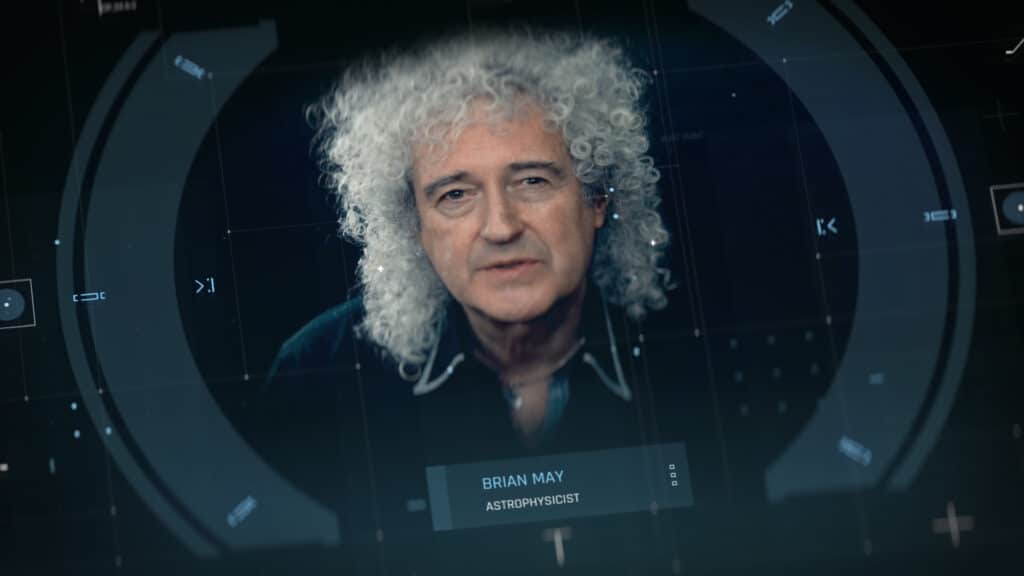When NASA’s DART spacecraft intentionally crashed into the Dimorphos asteroid in September 2022, it created quite a spectacle. Impressively, legendary Queen guitarist and astrophysicist Sir Brian May was one of many scientists analyzing the dramatic impact. Images showed a massive plume of debris extending over 6,000 miles into space. Scientists cheered as the impact shortened the asteroid’s orbit by about 33 minutes, proof that kinetic impact can be used to deflect dangerous space rocks. But the big question remains: What exactly happened to Dimorphos?
The 76-year-old May helped simulate DART’s collision to better understand the effects. His work supports planetary defense efforts to determine if crashing spacecrafts into threatening asteroids could deflect them. Now, a study published in Nature Astronomy uses computer simulations to conclude the asteroid likely suffered a total “reshape” from DART’s blow. Using high-powered simulations, researchers found that the impact likely wiped out any recognizable crater and “reshaped” Dimorphos completely.
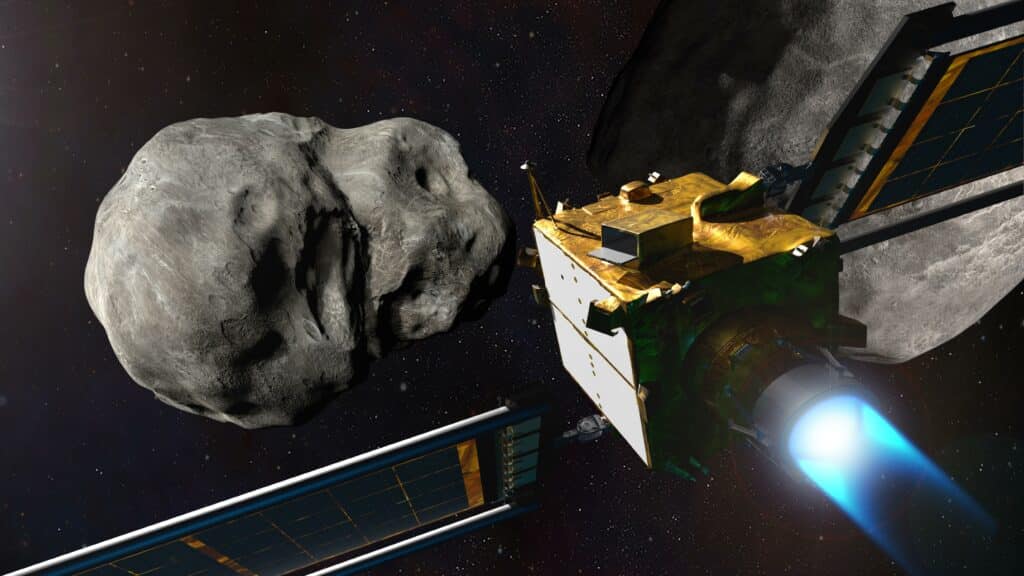
“The likelihood is that the crater grew to encompass the entire body itself, so that Dimorphos ended up being completely reshaped,” explains study co-author Dr. Sabina Raducan, a physicist at the University of Bern, in a statement.
To interpret the simulated reshaping, May collaborated with Claudia Manzoni to produce stereoscopic renderings of the asteroid. Their images depict a dramatic plume blooming from Dimorphos after DART’s strike. Researchers estimate 1% of the asteroid’s mass erupted into space, while 8% shifted position across its surface.
If true, this would explain why DART was so efficient at shifting Dimorphos’s trajectory. The team estimates a whopping 1% of the asteroid’s mass was blasted into space, while another 8% got shoved around the surface. For an object held together mostly by weak gravity, that’s a huge change.
“If you think of Dimorphos as starting out as resembling a chocolate M&M, now it would look like it has had a bite taken out of it,” says Raducan.
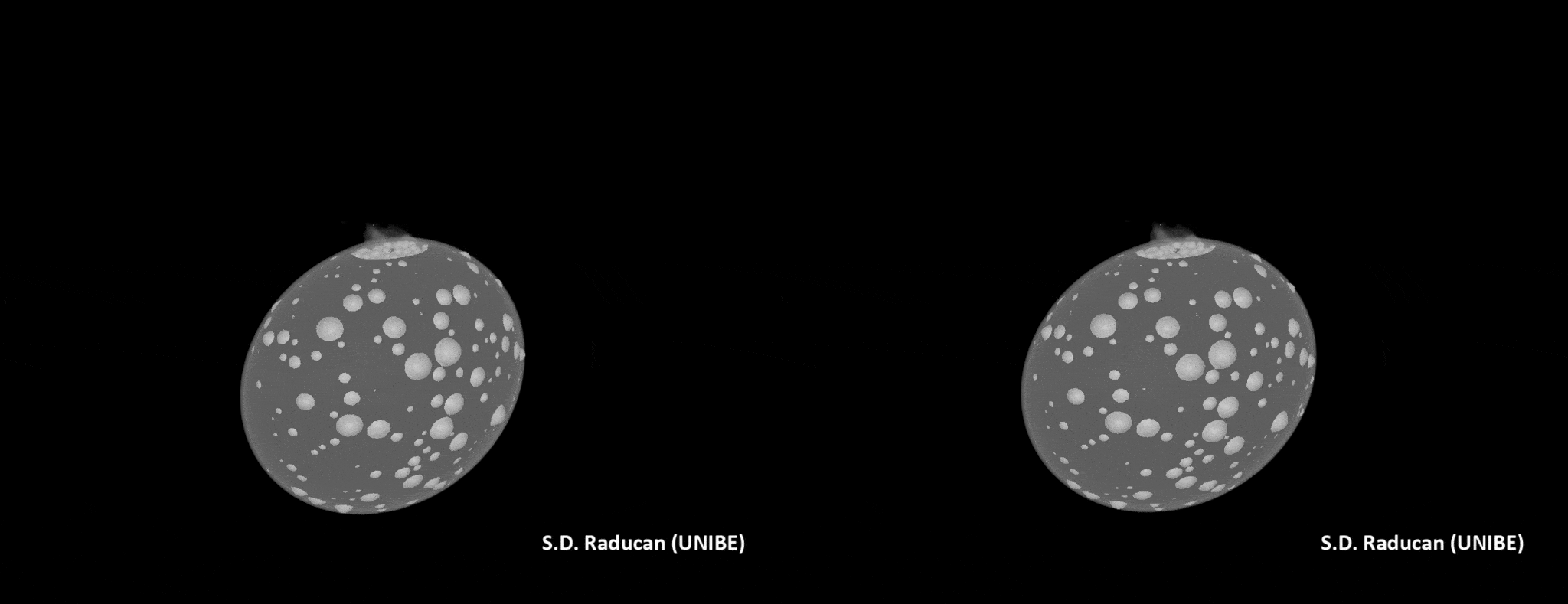
Rubble Pile Asteroid
To reach these conclusions, Raducan’s team ran over 250 computer simulations of the impact using custom software. They tweaked variables like the asteroid’s composition and density to see which best matched real-world observations.
The results point to Dimorphos being a “rubble pile” asteroid – essentially a loose clump of rocks rather than a solid mass. On such a fragile object, DART’s blow kept expanding, swallowing up the entire surface. Hitting a stronger, monolithic asteroid would have produced a stable crater.
This rubble hypothesis matches findings from other asteroid missions like NASA’s OSIRIS-REx and JAXA’s Hayabusa2.
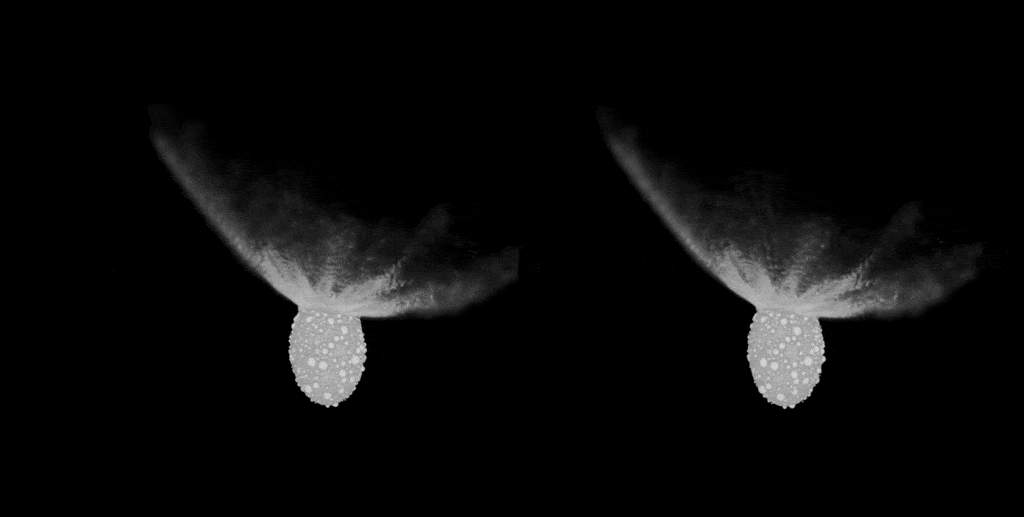
“Ryugu – visited by Hayabusa2 – and Bennu – visited by NASA’s OSIRIS-REx spacecraft – are carbon rich ‘C-class’ asteroids, very different from the silicate-rich ‘S-class’ Didymos and Dimorphos, but all of them do seem to possess a comparable lack of cohesion,” notes study co-author Dr. Patrick Michel. “We still need to understand and clarify this behavior, because we cannot make statistics on only a trio of asteroids, but a general lack of cohesion for all small asteroids is an intriguing suggestion, and would be good news for planetary defense, because if we know in advance how a body will react, this will make it easier to design the appropriate deflection tools!”
If true, it’s good news for planetary defense. Knowing asteroids are fragile means we can better predict how our impacts will alter their orbits.
Mystery No More
The European Space Agency plans to get an up-close look at the transformed Dimorphos in late 2026, when its HERA probe reaches the asteroid. But simulation images may have already solved one mystery: why no distinct crater has been spotted in photos so far.
“Hera will probably not be able to find any crater left by DART,” predicts Raducan. “What it will discover instead will be a very different body.”
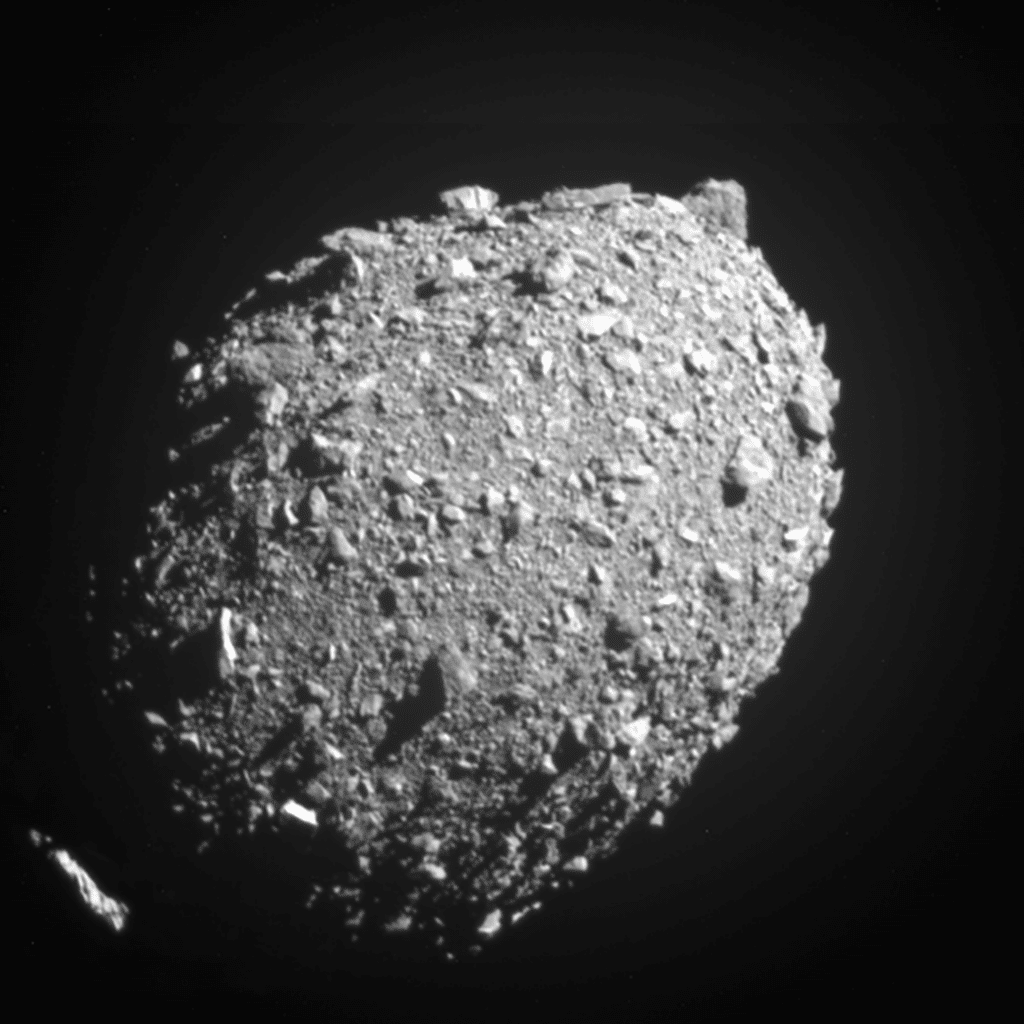
While we await HERA’s arrival, scientists are comparing their simulated post-impact images, including May’s work, to recent telescope observations. So far, the predictions of a “bitten” shape and shifting orbit seem to match reality.
Crater or no crater, DART clearly impacted Dimorphos more severely than expected. Ultimately, scientists posit the new “bite-shaped” Dimorphos lost internal mass and had its original saucer-like silhouette altered. Upcoming observations will confirm whether the asteroid’s orbit truly changed. By contributing cutting-edge visualizations, Sir May and colleagues help unravel the mysteries of DART’s groundbreaking deep-space achievement.
